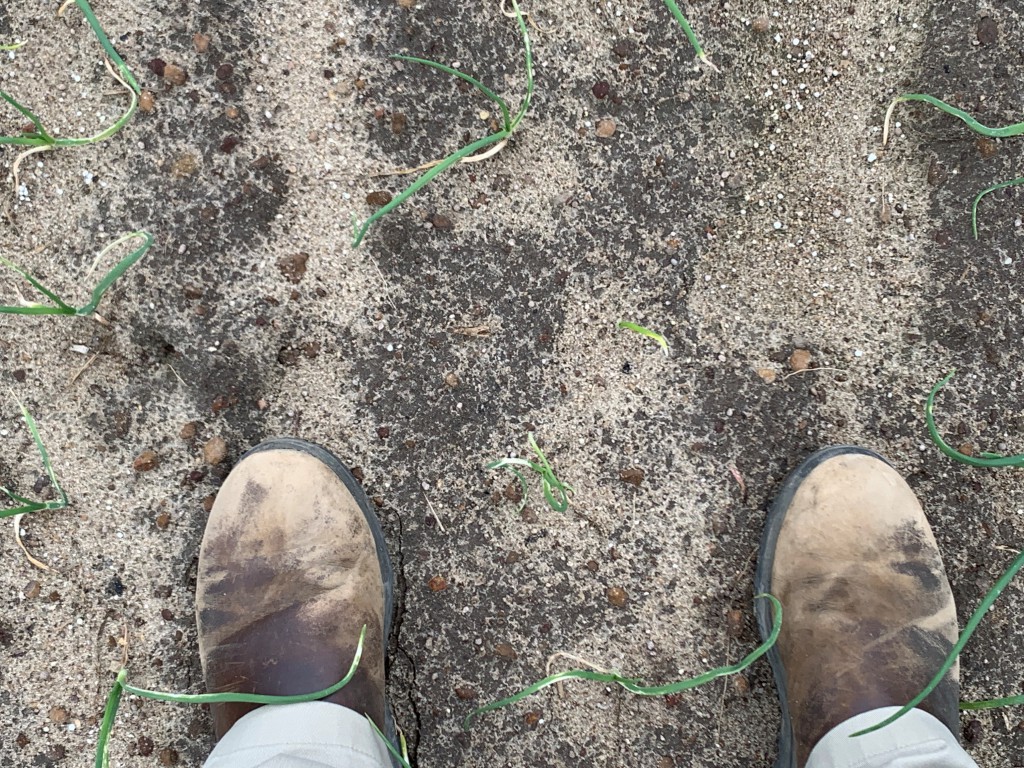Here is an excellent crop report written by Tattnall County Extension Agent Aubrey Shirley.
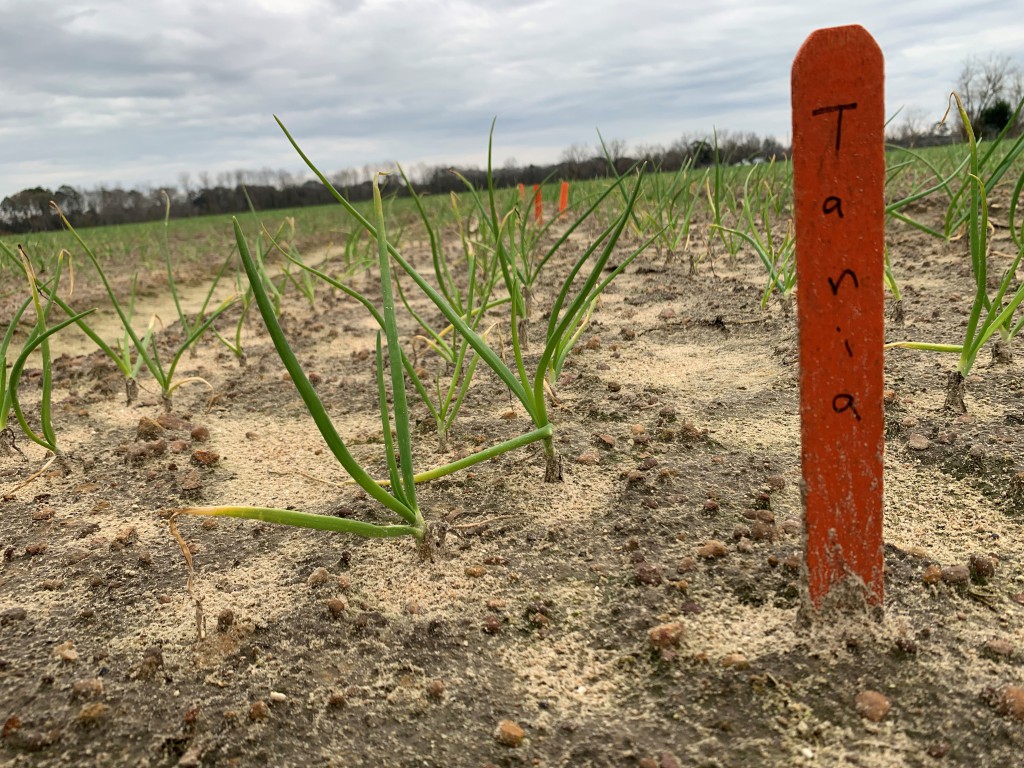
Another onion season is here and we are now in the middle of it. The weather outlook for this winter season had called for increase temperatures and below average rainfall. Until a month ago the forecast was correct. October and November were warm, with December turning cooler with a number of cloudy days. January has had similar weather patterns, where does this put our onion crop?
Around the same time last year, much of our crop, especially the early varieties, was much bigger. I have driven around all over the county and most of the onions are at the three to four leaf stage and the tops are more yellow. The root system however, is much larger than what I would suspect given the small amount of foliage. The cloudy weather and cooler temperatures have been an impediment in the growth of the onions.
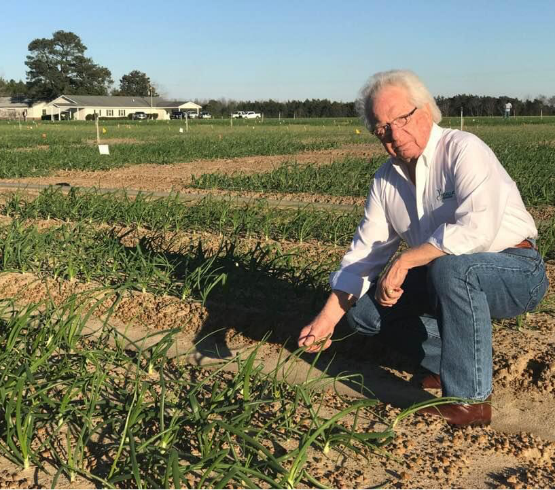
Comparing the growing degree days for this year the 2019-2020 season starting the accumulation on November 15th we have 279 hours for 2021 compared to 407 hours for the 2019-2020 season (Vidalia weather station). Looking at the Odom station we have a similar trend of 275 for 2021 and 425 for 2020 season. For some varieties in 2020 this accumulation put them at almost a third of the way to maturity in January! The only onions that I have seen that were larger than what could be considered average for this year were planted before December. This allowed them to accumulate several more heating units than those planted in December. If you remember November was warm.
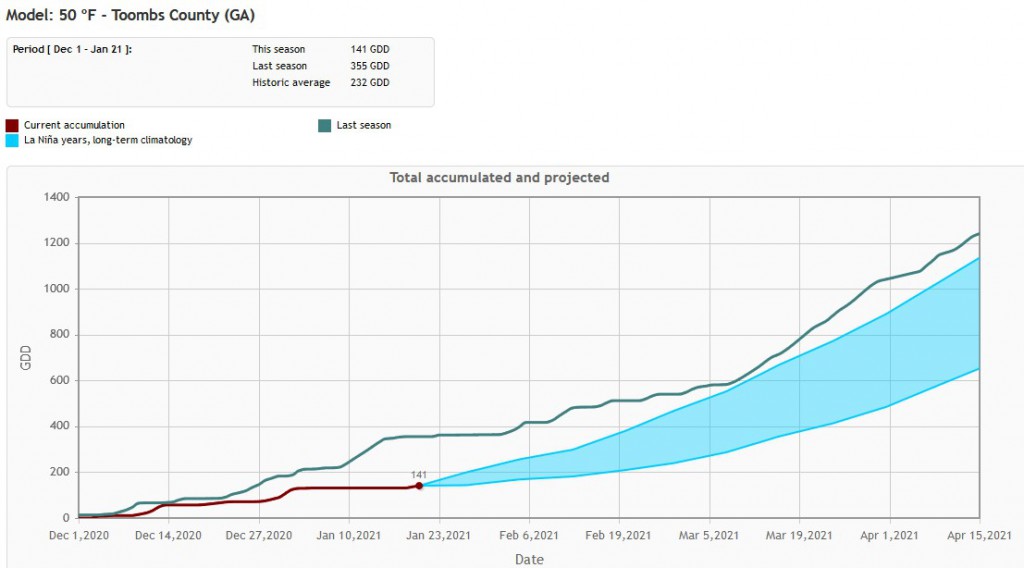
Disease issues can be strongly correlated with increased temperatures. I have not received calls related to disease issues. Stunted and slow growing onions, yes, but I have not seen much disease. We know however, that this can and usually does change as temperatures begin to rise. Stay on a regular copper and fungicide spray to try and prevent the earlier pathogens for becoming established.
Increased Goal herbicide injury has also been a reason for a number of calls this season. Many fields have more injury when compared to last year. The cloudy and rainy weather seems to keep reactivating the goal and this splash has caused more injury. The onions are also not vigorously growing and any hindrance can increase symptoms.
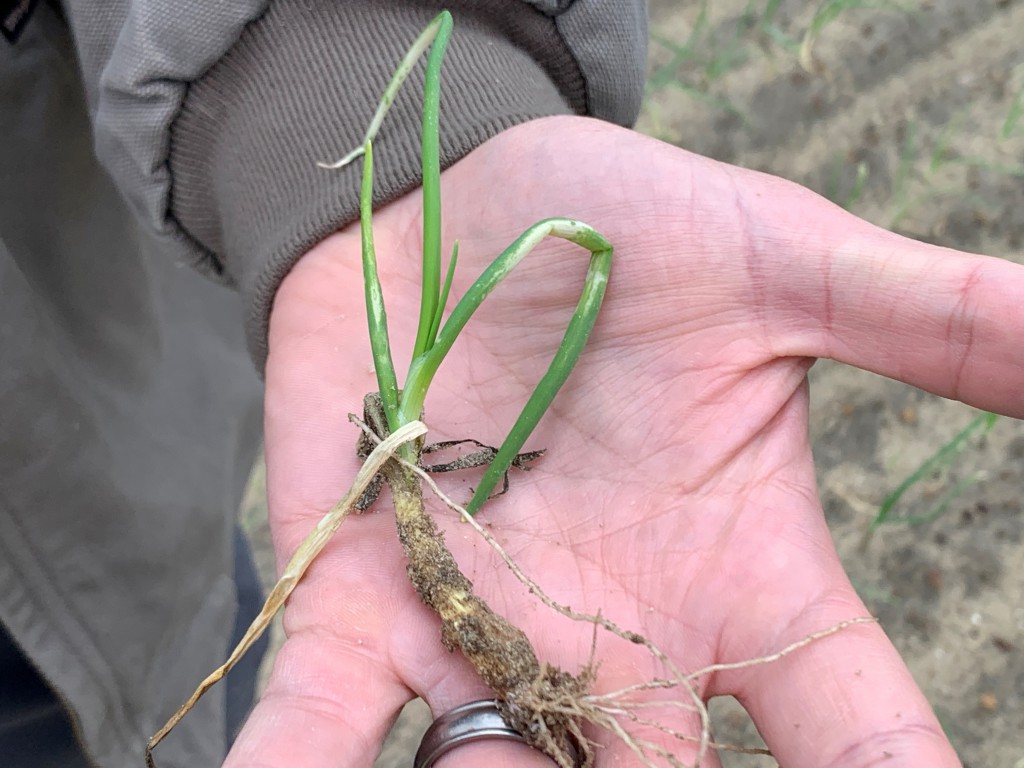
As the weather begins to warm up and sunny days slowly begin to come back the onions should begin to green up and start growing. Herbicide injury might still be an issue but this should lessen as the weather warms and as the herbicide begins to breakdown. The large root systems that these plants have should accelerate the growth when conditions become more favorable.
If you have any questions please let Derrick or myself know give us a call at (912)557-6724.
